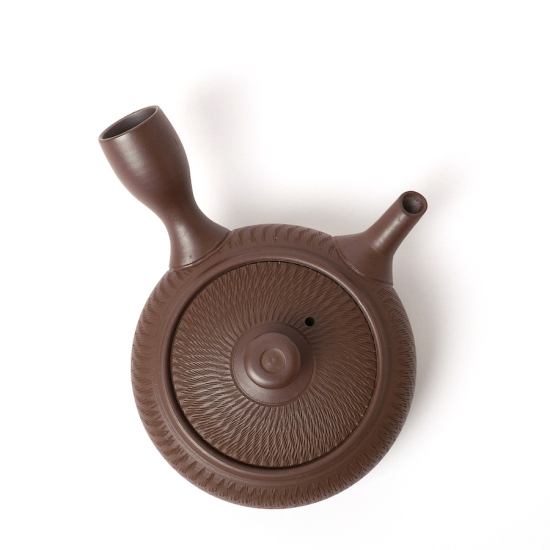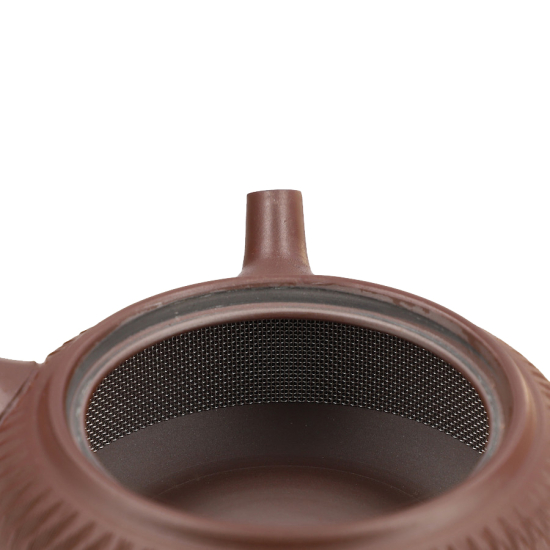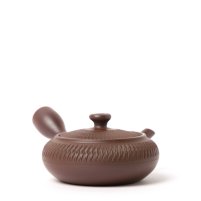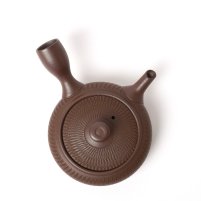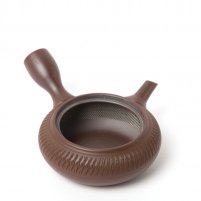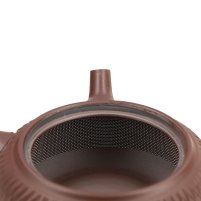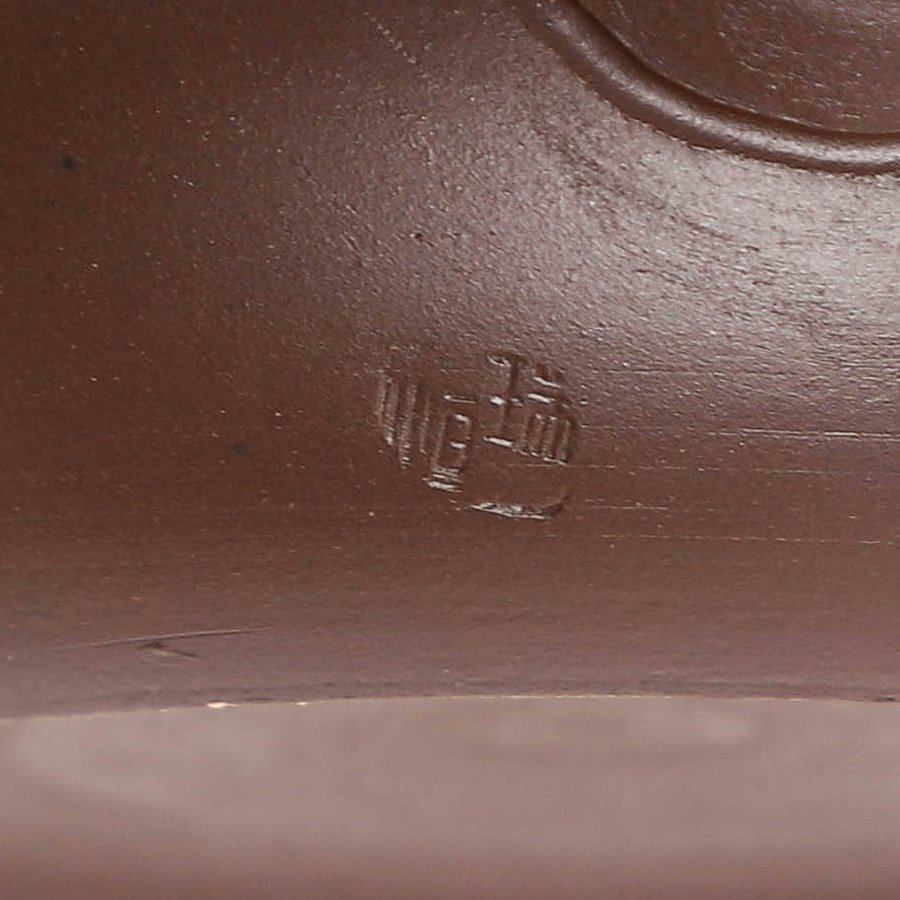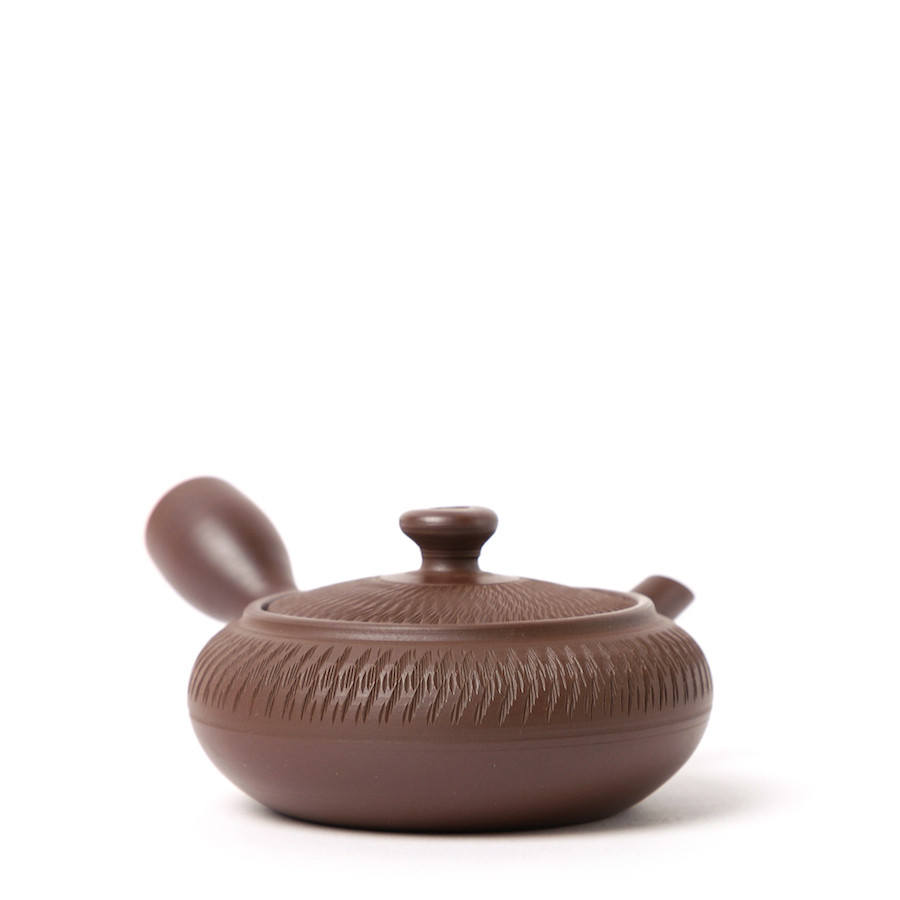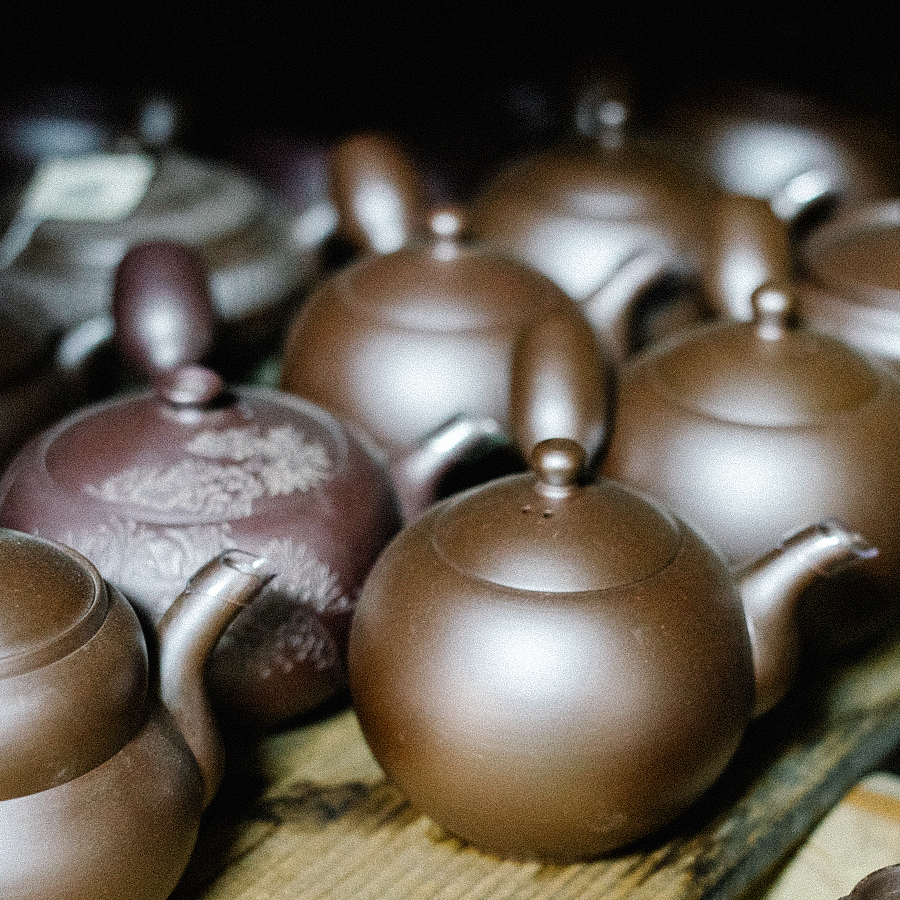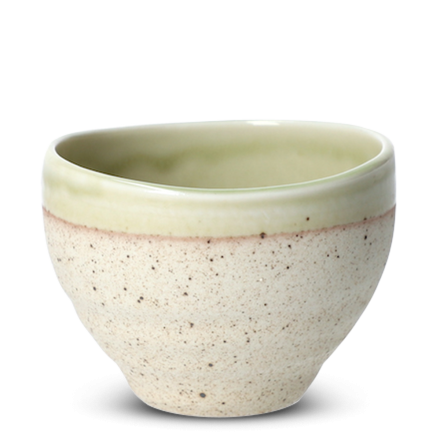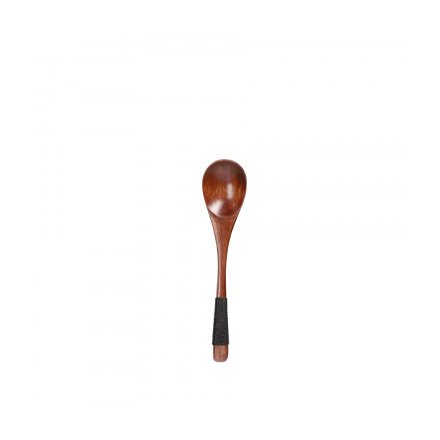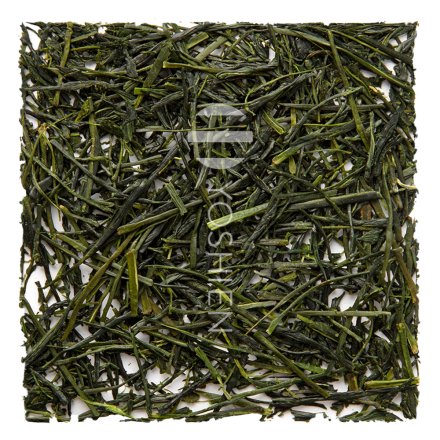Merchant and passionate chajin (“tea person”) Nunami Rozan is credited as the founding father of Banko-yaki. Back in the 18th century he opened a kiln in what is now Asahi-machi, Mie prefecture, stamping his wares with 萬古不易 – banko-fueki: “eternally unchanging” – in the hope that his ceramics would be passed down across generations forever. Today Banko-yaki is still produced in the Mie prefecture, primarily in the city of Yokkaichi, and is a protected traditional craft of Japan. Synonymous with Banko is the local, iron-rich shidei "purple clay", which when baked in a high-temperature reduction furnace becomes very heat resistant and turns the characteristic deep violet-brown of Banko-yaki, with an almost metallic sheen. It is said that the tannins in green tea react with the iron in unglazed shidei teaware to soften the astringency of the tea, highlighting its sweetness; therefore umami-rich teas such as sencha, kabusecha and gyokuro come highly recommended when using Banko.
Biri or Tobikanna 飛び鉋
A classic decorative feature seen in ceramics across Japan, tobikanna translates to "flying (carpenter's) plane" and is where a metal tool is used to carefully incise the surface of dried but not yet fired clay objects as they turn on the potter's wheel, creating a continuous pattern around it. In Yokkaichi this technique is regionally known as biri.




